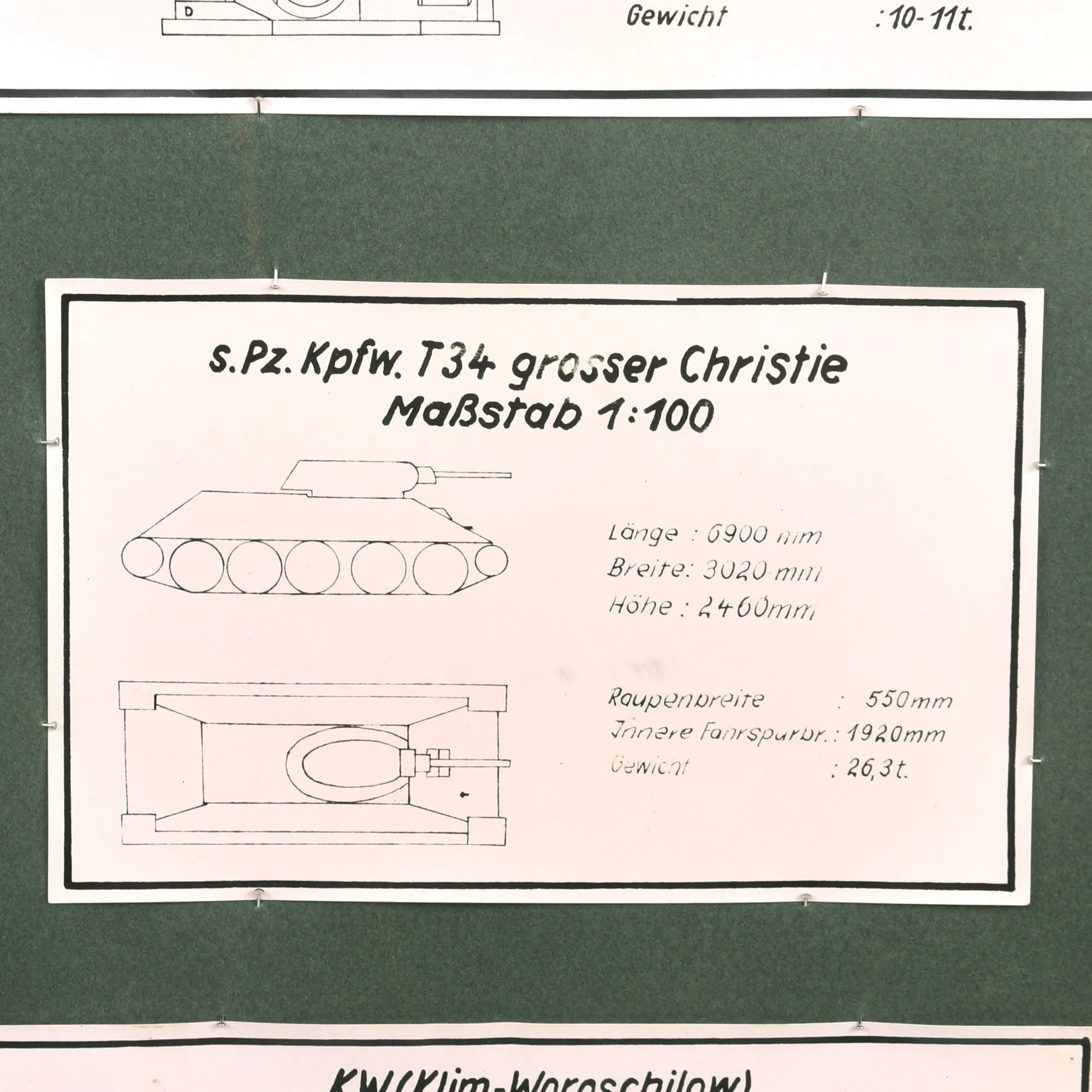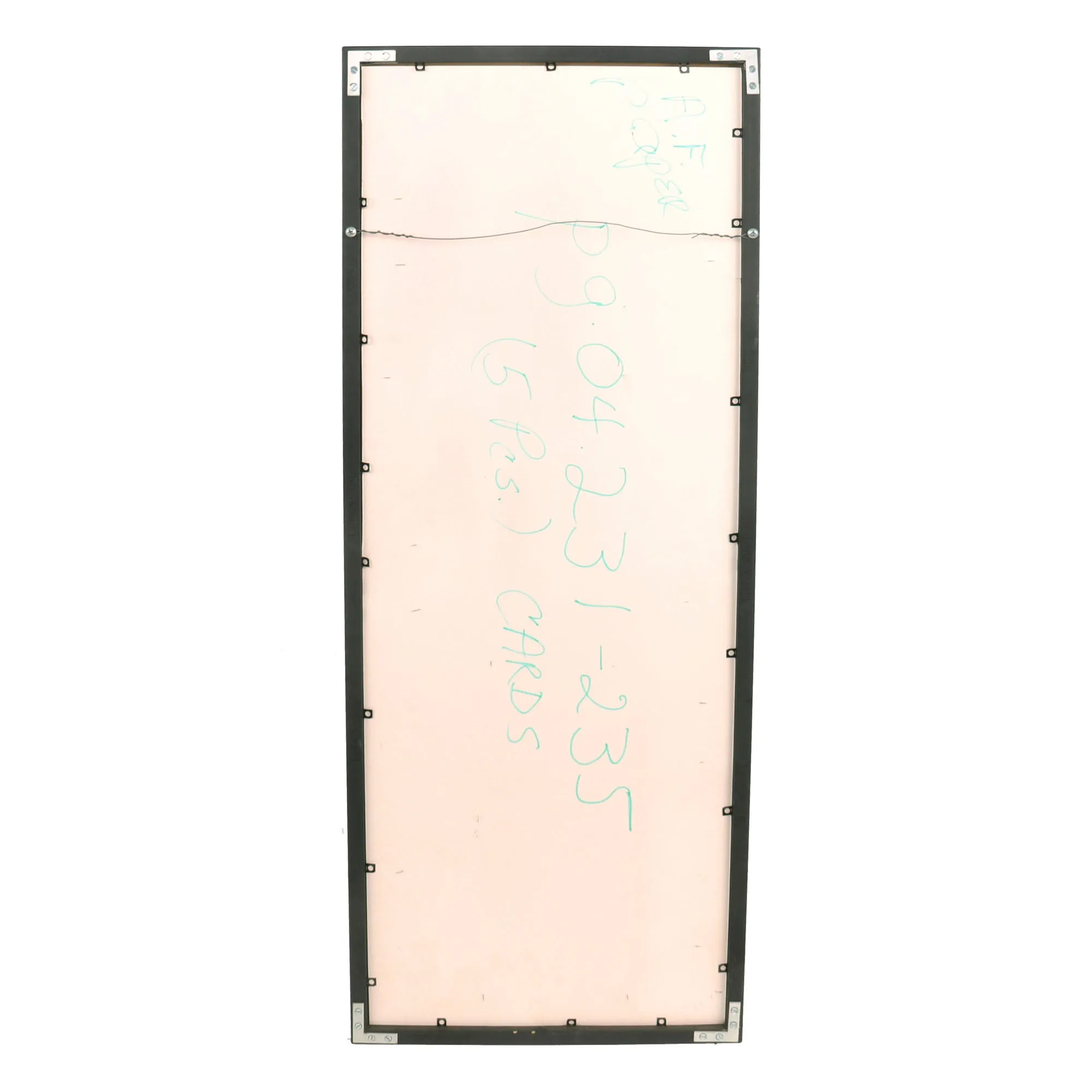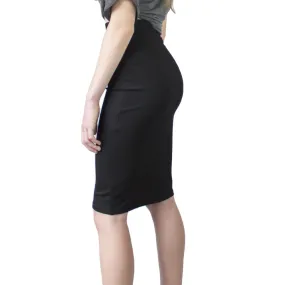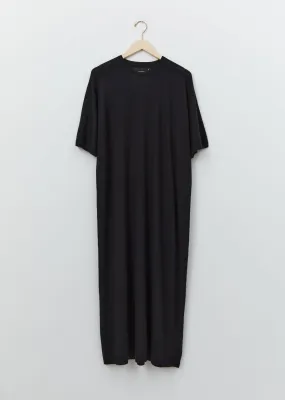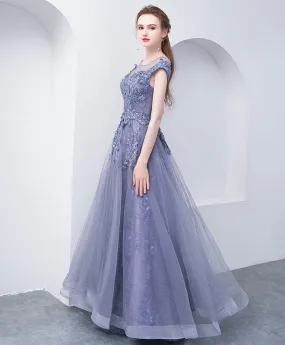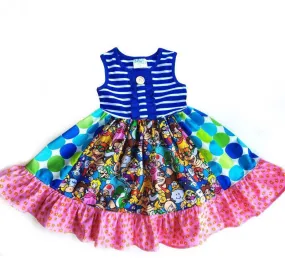Original Item: Only One Available. Being able to recognize friend from foe on the battlefield is of the utmost importance during any armed conflict. The development of camouflage and constantly fluctuating front lines made this much more difficult, as well as much more important due to the constantly changing nature of battle. To aid with this all sides in WWII developed various types of recognition models, which would often give basic measurements and other information to aid in identification.
This is a lovely set of German WWII Identification cards for tanks, which have been mounted in a 13"W x 34"H frame for display. Each displays the name (in German) of the tank, and under this is Maßstab 1:100 (Scale 1:100), referring to the illustration on the left side of each, which show both a side and top down view of each tank.
As best we can tell, these are the five tanks shown in the identification cards:
- Soviet T-26C Light Tank. There were numerous variants of this tank, and we do not know which one the "T26C" designation here refers to. The 9.7t weight would definitely indicate it was a later variant with the 45mm main gun and conical turret.
- Soviet BT7 (bystrochodni Tank) Kl. Christie Cavalry Tank. This was the last of the Soviet "Bystrokhodnyy tank" High Speed Cavalry Tanks to be produced. These were lightweight and relatively well armored. The "Christie" refers to the type of suspension, which utilized coil springs, instead of the much more common leaf springs.
- Soviet S.Pz.Kpfw. T34 grosser Christie Medium Tank. This was the main battle tank used by Soviet forces throughout the war, and its 76.2mm gun was initially the largest on any tank in service. It was effective and able to be rapidly produced, giving Soviet forces a large advantage in terms of numbers. The "Christie" refers to the type of suspension, which utilized coil springs, instead of the much more common leaf springs.
- Soviet KW (Klim-Woroschilow) Heavy Tank Model KV-1. Kliment Voroshilov (KV) tanks are a series of Soviet heavy tanks named after the Soviet defense commissar and politician Kliment Voroshilov who operated with the Red Army during World War II. There were multiple variants, mainly identified by the main turret and armament. the KV-1 Turret on this example was armed with a 76.2 mm M1941 ZiS-5 gun.
- Soviet KW (Klim-Woroschilow) Heavy Tank Model KV-2. The same as the previous tank, except this version was armed with a much heavier KV-2 turret, which added 7 tons to the weight. The armament was a modified 152 mm M-10T howitzer, one of the largest guns ever fitted on a tank.
A great display piece for any wall!
The set came to us from the American Armoured Foundation, Inc. Tank and Ordnance Memorial Museum. The AAF Tank Museum was a living memorial dedicated to the Tank and Cavalry soldiers of the world. Before 1981 some of the artifacts that make up the AAF Tank Museum was a private collection belonging to Mr. William Gasser. Mr. Gasser felt that his collection would be beneficial in educating present and future generations to the sacrifices made and the technologies gained during war. Therefore, in 1981 the AAF Tank Museum was established as a non-profit charitable organization, and Mr. Gasser's donated his private collection to the Tank Museum. Mr. Gasser is still active as Volunteer Director and Curator of the Tank Museum and his knowledge of military history has been a great asset to the museum. Unfortunately after 20 years of operation it had to close its doors, which is when this set was acquired.

 Cart(
Cart(


